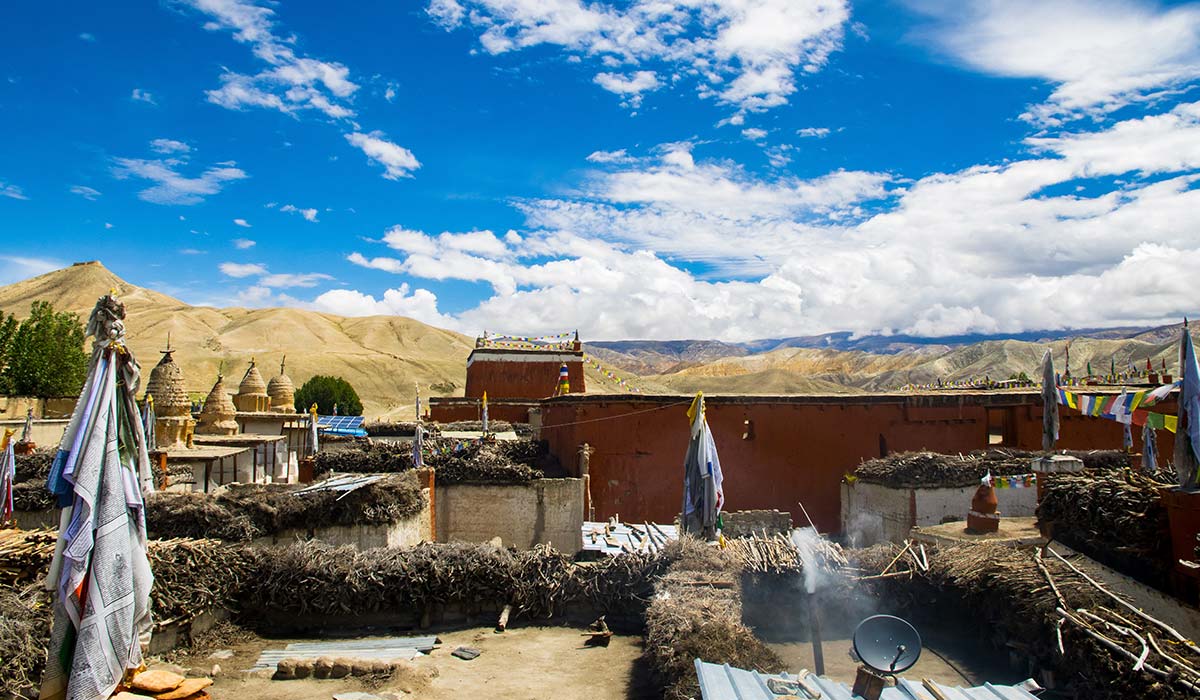Upper Mustang Trek Cost
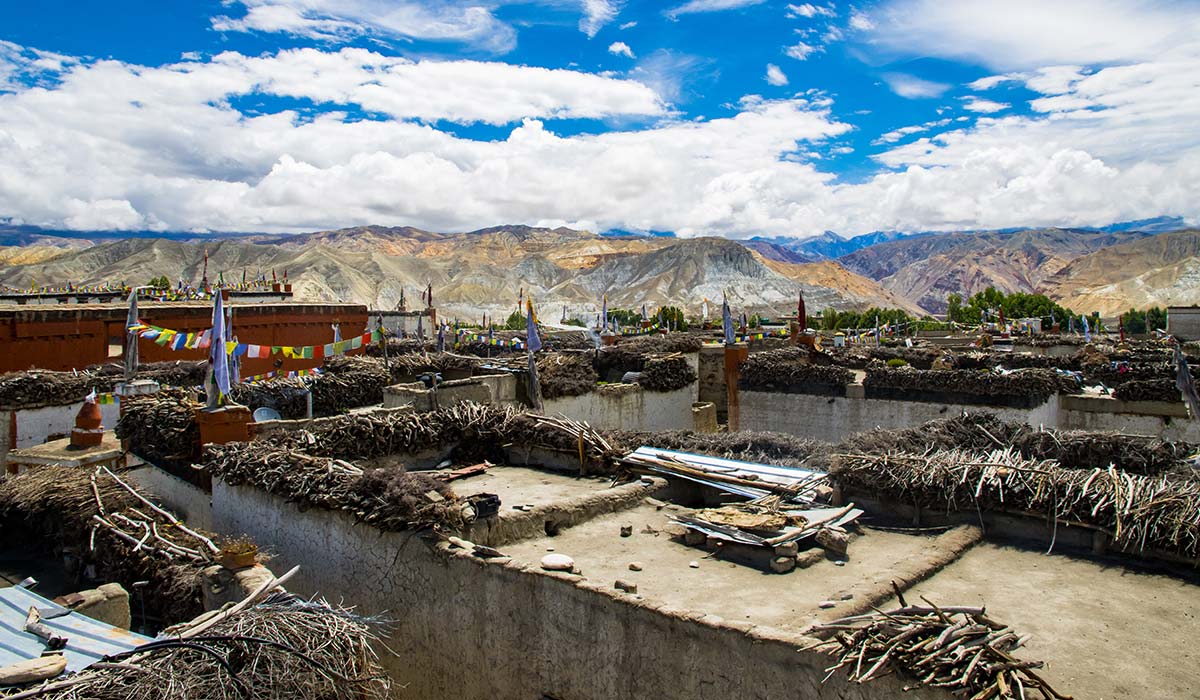
The cost of our 16-day Upper Mustang Trekking package starts from USD 1,500 per person. We also offer group discounts, and here are the price rates for different group sizes
| Number of Pax |
Price Rate |
| 1 Pax |
USD 1,500 per person |
| 2-5 Pax |
USD 1,450 per person |
| 6-10 Pax |
USD 1,400 per person |
Why to Choose Us?
- We have several years of experience in organizing high-altitude treks in different remote locations of Nepal. Our experienced guides and expert team leaders will ensure in making your journey safe, easy, smooth, and fruitful
- Our guides are government license holders and fluent in English speaking. They are knowledgeable about the natural highlights and cultural significance in the trekking regions
- Our guides are well-trained in a wilderness first aid kit and quick respondents to emergency situations
- We specialize in providing organized treks by arranging and handling every essential required for a smooth journey. The logistics like permits, travel arrangements (flights and ground transportation), accommodation (pre-trek, during trek, and post-trek), guide and porters, first aid kit, food, etc
- We also offer cost-effective, customized itineraries at the request of our clients. We design fine-tune itineraries based on your interests, preferences, available time, and fitness/experience level
Customized Itineraries and Trip Extensions
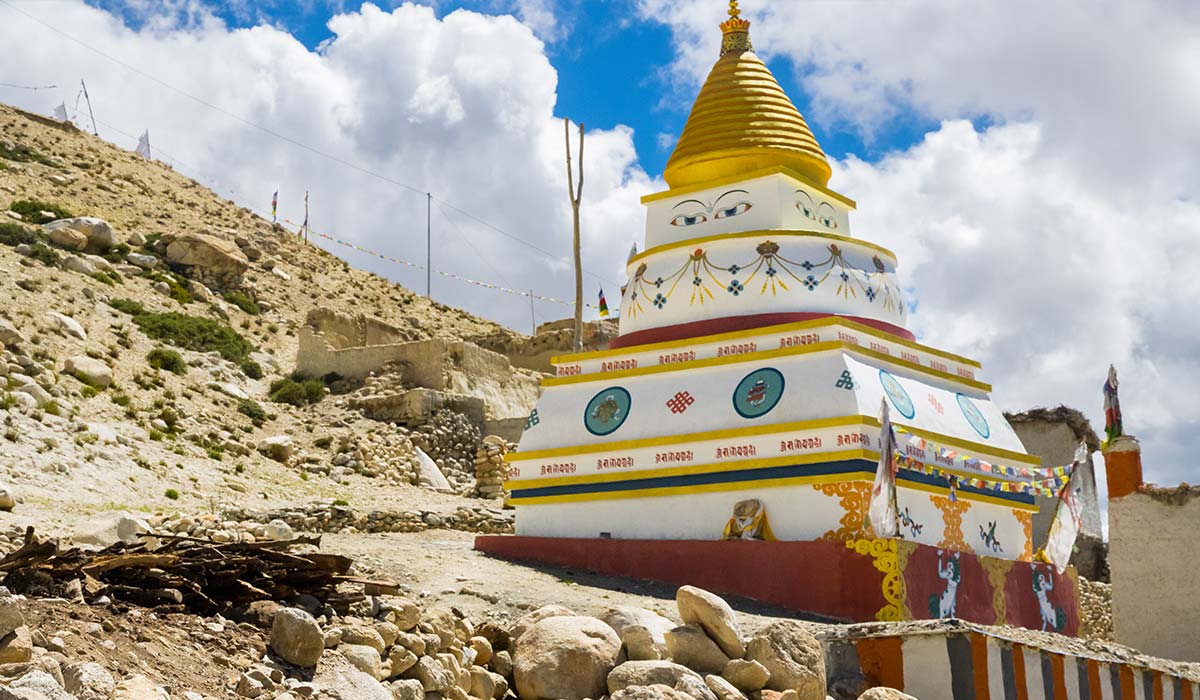
There are several routes to reach the Upper Mustang, like
- Jomsom to Lo Manthang
- Trek from Pokhara via Ghorepani and Jomsom
- Trek from Pokhara via Annapurna Circuit
- Kagbeni to Lo Manthang
- Fly in and out of Jomsom
Our 16-day Upper Mustang Trek itinerary follows the Kagbeni to Lo Manthang route. However, we can design a personalized itinerary considering your available travel days and the highlights you desire to enjoy. If you have enough travel time, we can add an additional 3-4 days to the Upper Mustang Trek itinerary. This way, you can visit the nearby places that are worth exploring. You can extend the trek by adding side trips to the following places
- Muktinath Temple: Despite flying from Jomsom to Pokhara, you can trek from Jomsom to Kagbeni and visit the sacred Muktinath Temple en route. Muktinath is a holy pilgrimage site revered by both Hindus and Buddhists. You can also enjoy the magnificent views of the glistening mountains from here.
- Sky Caves: You can visit the man-made sky caves near Tange and Tetang villages.
- Luri Gompa above Ghemi village is another side trip that you can add during your Upper Mustang Trekking journey
- Chhoser Cave near Lo Manthang provides you with insights into the religious and architectural heritage of the Upper Mustang
Physical Fitness and Training
Cardio Workout: Running, Dancing, Cycling, Swimming, Rowing, Star climbing, Brisk walking, Jumping rope,
Strength Training: Squats, Deadlifts, Lunges, Bench Press, Push-Ups, Lunges, Pull-Ups, Planks, Rows, Bicep Curl, Overhead Press
Additionally, practice hiking uphill and downhill on varied terrains with a loaded backpack. This will help you familiarize yourself with gear while building a cardiovascular system and muscle endurance. Acclimatization hikes prepare you to trek for long distances in higher altitudes without being affected by altitude sickness.
Mental Preparation
Mental stability and resilience are vital for a successful adventure in wilderness locations. You should be prepared for the challenges that could strike with your remote trekking adventure. Fatigue, frequent weather changes, minor injuries, altitude sickness, inadequate services and facilities, acclimatization needs, etc., are the common challenges during any high-altitude endeavor. If you are flexible in adjusting to sudden occurrences of uncertain circumstances and are driven by a positive mentality and strong determination, no journey is impossible or difficult. So, mental preparation to successfully achieve the goal and ambition is needed in avid trekkers who want to explore the undiscovered corners of the mountain.
Luggage Storage Options
There are several luggage storage options available to keep your belongings safe and secure throughout your travel period. As soon as you land at the Tribhuwan International Airport (TIA) in Kathmandu, you can store your excess luggage there. Your luggage will be stored with high security at the airport. However, the price rates are also expensive. Next, you can store your luggage at your hotel. Most of the hotels will provide this facility for their guests at little or no cost. You can also consider your trekking agency for storage services, and for that, they will not charge you a bit. There are also some dedicated places providing luggage storage services to travelers in charge of US$ 2- US$ 3 per day per luggage.
Essential Packings
- Headwear and Handwear: sun hat/brimmed hat, warm hat/beanie, scarf, liner gloves, insulated gloves, waterproof gloves
- Bodywear: Thermal wear, windproof jackets, and trekking pants
- Footwear: Sturdy trekking boots, light sports shoes, woolen slippers, flipflops, liner socks, woolen socks
- Gear: Backpack, trekking poles, headlamp, UV-protected sunglasses, and sleeping bag
- Health: First aid kit, water purification drops/tablets, and personal medications
- Hygiene: Toothbrush, toothpaste, soap, shampoo, quick-drying towel, deodorants, body wash, moisturizer, lip balm, SPF 50+ sunscreen, earbud, nail clippers, hair brush/comb, small mirror, hair clips/ties, razor, shaving cream
- Documents: Visa, airline tickets, valid passport, insurance papers, cash/credit cards, few passport-size photographs
- Miscellaneous: Camera, smartphone, binoculars, portable chargers, power bank, play cards/entertainment sets, earphones/headphones, thermal water bottle, pen and journal, high energy snacks, navigation tools (GPS, maps, compass)
Permits and Fees
- Annapurna Conservation Area Project (ACAP) Permit: An ACAP permit is required to access the Annapurna Conservation Area during the trek.
- Restricted Area Permit (RAP): A RAP permit is necessary for trekking in the Upper Mustang region, which falls under the restricted/controlled zone by the government of Nepal.
- 50 US$ (valid for upto 10 days)
- Extension of stay in the restricted area of Upper Mustang will cost an extra 50 US$ per day per person.
Your permits can be obtained by registered and trusted trekking agencies on your behalf. They will fulfill all the required paperwork and get your permit from the office of the Nepal Tourism Board. All you have to do is provide the details of the required documents, such as copies of your passport, visa, and air tickets, and two passport-size photographs.
The Upper Mustang has been made open for tourists only since 1992. Although the place is allowed for trekking with a special Restricted Area Permit (RAP), only 1,000 visitors can explore its pristine, unexplored beauty annually. Additionally, only trekkers from registered and authorized trekking agencies can access the region. To get the Upper Mustang Restricted Area Permit, there should be a minimum of two people in a trekking group. A RAP permit is not allowed for a single person or a solo traveler. If you are alone, Good Vibe Adventure will provide permits by joining you with other fellow trekkers.
Accommodation and Meals
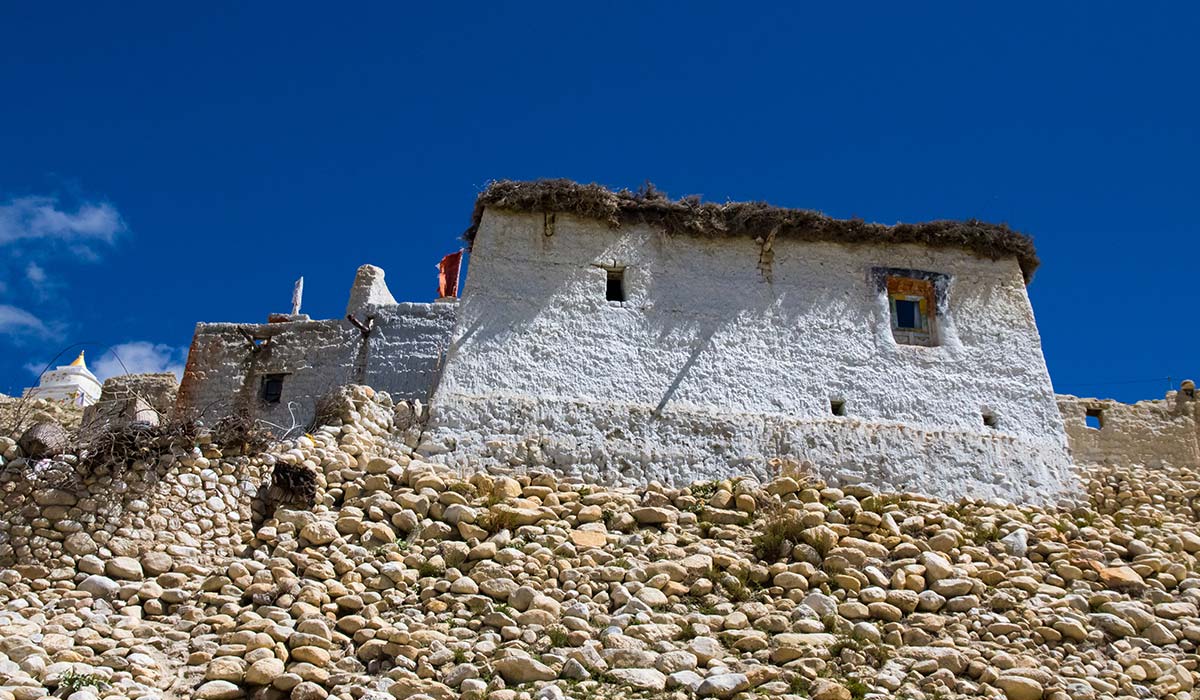
You will find basic teahouses and lodges for accommodation and meals during the Upper Mustang trekking journey. While the accommodation options are limited when compared to other popular trekking destinations like Annapurna region and Everest region, the available ones are enough to provide you with a comfortable stay and decent meals. Having said that, it is advisable to make prior reservations for the accommodations during the peak trekking seasons, like spring and autumn.
Because of the remoteness and restricted status of the Upper Mustang, the services and facilities are ordinary and limited. During your teahouse/guesthouse stay, you will be sharing rooms with your fellow trekkers. You will find a room with twin beds and a bed with a blanket, mattresses, and pillows. Private room options are also available, but they are more expensive. For toilets, it will be mostly traditional squat style and communal. In some well-established hotels, you can also find modern flush toilets. Additionally, bathrooms and dining halls are also available for common use.
The teahouse menu options are limited to locally available items and some popular Western dishes. You will be served all three meals breakfast, lunch, and dinner during the journey. The commonly available meals in most of the teahouses in the region are dal baht (rice, lentils, pickles), Yak steaks, flatbread, jam bread, egg (boiled, fried, scrambled), pasta, chowmein, thukpa, noodles, mushroom soups, momo, sandwiches, gundruk and dhindo, etc.
Bathing and Washing
The shower and laundry facilities during the Upper Mustang Trek vary on the accommodation types. Generally, we will stay in traditional and basic teahouses along the trek routes, where you will get cold water for bathing. The cold shower is refreshing after long hours of walking, but it might trouble you during the wintertime. If you opt for a hot shower bath in the teahouses, they can arrange a bucket filled with hot water, which is placed in the bathroom. Some teahouses also provide you with solar-run hot shower services. However, for the hot water bathing service, you have to pay them an extra US$ 5-US$10.
For laundry, you will have the option of a sink or buckets. Small and light clothes can be done in sinks, whereas for large and heavy clothes, using buckets will be the right choice. While some teahouses provide washing and drying services to their customers, they charge an additional amount of US$2-US$4.
Electricity and Internet
During the Upper Mustang Trek, you will get to enjoy the electricity and WiFi facilites. You can easily charge your electronic devices and use the internet in the teahouses. These teahouses along the Upper Mustang trekking trails have electric power and are equipped with routers. However, for the connection to the internet and charging your gadgets, you will have to pay an additional amount, ranging from US$3 - US$5.
In some remote highland villages, the teahouses are dependent on solar power, which is not always reliable. As there can also be a chance of frequent electric power cut-offs, it is wise to carry a power bank or solar charger to keep your camera, cell phone, and other services active and working.
Altitude Sickness
- Possibility: After exceeding 2,500 meters of elevation
- Symptoms: Headache, nausea, vomiting, shortness of breath, dizziness, rapid heartbeat, fatigue, and sleeping difficulty.
- Prevention: Avoiding cigarettes and alcohol, eating a healthy and nutritious diet, ascending gradually, staying hydrated, and taking rest and acclimatization stops.
- Cure: Quickly descending to lower elevations and staying there until you recover. Taking medicines like acetazolamide (Diamox) and Nifedipine (Procardia).
Upper Mustang Weather and Temperature
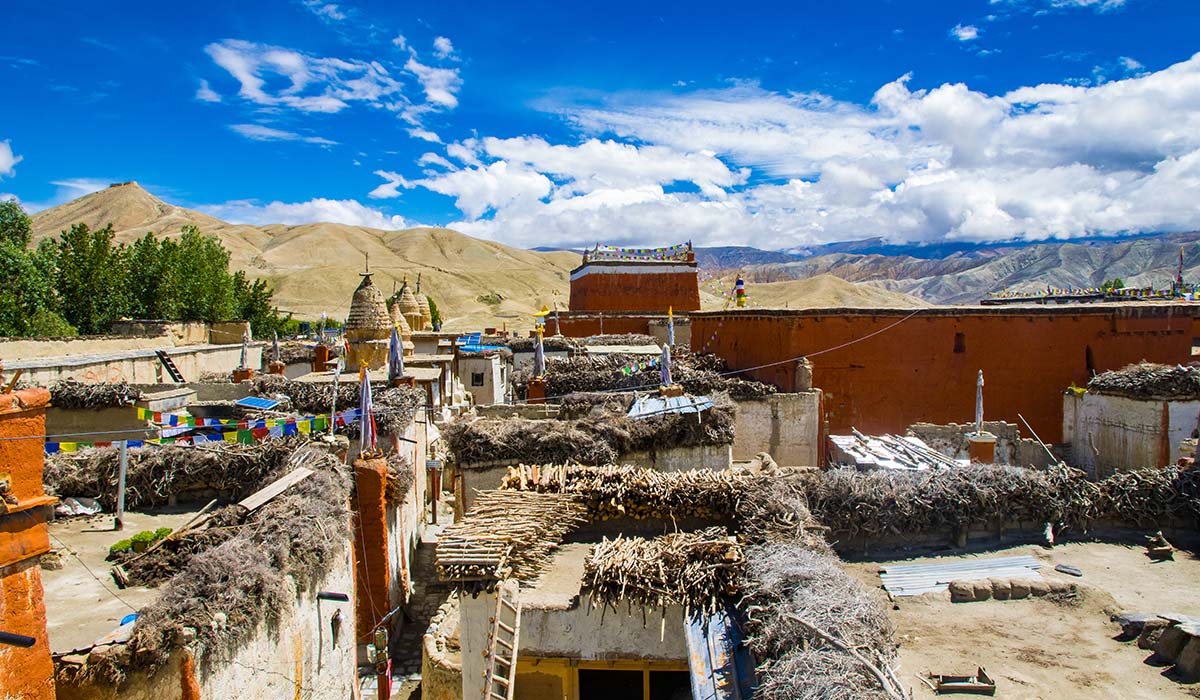
Summer/Monsoon: Summer/Monsoon is the hottest and wettest season. This period receives strong sunlight and heavy rainfall. The average daytime temperature in the Upper Mustang during summer ranges around 18 to 25 degrees Celsius.
Winter: Winter is the coldest time of the year. You can expect chilly weather and frigid temperatures during this time. The temperature is somewhere between 0 to 10 degrees Celcius at daytime and plummets to below freezing scale during early morning and night.
Spring: Spring is colorful, with blooming flowers everywhere on the Himalayan landscapes. It is a delightful time with stable weather and clear skies. The temperature is moderate, ranging from 15 to 20 degrees Celcius.
Autumn: Autumn is a post-monsoon period that remains dry after a long, drenching monsoon rain. The atmosphere is fresh, with no dust and haze, and the trekking trails are dry. You can experience a mild temperature that hovers around 15 to 20 degrees Celcius during your visit to the Upper Mustang at this time.
Gain Insights On:
